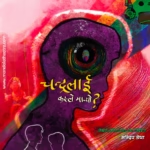The curtain of the second Nepal International Theatre Festival 2022 (November 25—December 3, 2022), organised by Mandala Theatre Nepal at its new venue at Thapagaun, Kathmandu, rolled down with three essential messages for the stakeholders of modern Nepali theatre.
First, the Covid-19 pandemic could not stop people from being creative and productive. Every ticket the audience bought and the show they attended on the cold evenings of Kathmandu’s early winter was a victory, a celebration of our collective dream. With their faces masked and hands sanitised, the audience arrived at the theatre carrying a zest for life and creativity. Second, GIZ, a reputed German INGO, supported the festival just as it did in the first edition. The underlying message was that Nepali theatre professionals still need external support to do theatre. Be that as it may, donor support has been a boon for theatre professionals who hardly get any support from the government. Third, the festival called for a reflection on the skills and energy of Nepali theatre artists. I want to focus on the third point in this article.
One of the driving forces of theatre in Kathmandu is the practice of running three-month-long courses for aspiring artists. The number of students applying for these courses offered by theatre groups has increased of late. Moverover, Mandala Theatre Group has started offering a year-long course on theatre studies. With this, the number of trainers, teachers and teaching materials required for theatre studies has increased. However, despite the almost a four-decade-long history of providing such short-term courses to aspiring artists, no effort has been made to establish theatre studies as an academic subject at the university level. As a result, only a handful of academics on modern theatre studies are available in Nepal.
Several performances of guest artists during NITFest drew the audience’s attention. Incidentally, the guest performers were graduates of theatre studies from one or the other universities. But the same cannot be said about Nepali theatre artists and their performances. As a theatre critic, I see Nepali theatre artists’ tremendous skills and potential for professionalism waning or getting derailed.
Creativity is often connected to “sadhana”, or the personal effort an individual artist puts into his or her work. I find two problems with such assumptions. First, people who assert such views come from the social and academic contexts where there were/are no opportunities for pursuing academically higher theatre studies. Second, even the academic courses offered at universities inculcate a passion for creativity among the artist students. Sadhana is not an exclusive experience felt by a few individual artists in a specific reclusive state of mind, but something that can be done or achieved in the classroom, workshops, library and rehearsal rooms in front of teachers and among fellow friends, students and researchers.
Students in their late teens and early twenties are found to apply for such short-term courses. Exposed to the art and charm of performing plays in their school and college, they seem eager to study and practice more on their interest. Since many of them need training at the basic level of understanding about theatre arts, the theatre groups running such courses hire locally available senior directors, experienced choreographers, dramatists, and dancers to conduct classes and produce a play by the end of the course. During such courses, they are taught academically canonical essays on acting, choreography and theatre history books from the East and the West. They are provided with training on physical exercises, breathing exercises and yoga. Rehearsal of a play is arranged for them. And at the end of such a course, students come up with the production of a play. But deep down, one knows that such short-term courses in theatre studies are not enough to develop professional skills and talents warranted by the competitive market and professionalism.
Tribhuvan University has been running programmes in fine arts, dance and music for several decades. Kathmandu University provides a BA and MA in music. But no university in Nepal seems ready to offer higher education in theatre studies even as there is no lack of theatre enthusiasts in cities such as Kathmandu, Pokhara, Damak and Dharan, among others. Considering how trainers and teachers have been running short courses regularly for over two decades now, it is safe to say that there is already an academic base and a market for theatre studies in Nepal.
In such contexts, the International Theatre Festival organised by the Mandala Theatre raises questions: How should the university address this very trend? Why do contemporary theatre directors and academics hesitate to approach universities and authorities concerned about running academically full-fledged courses on theatre? Who will create a medium between and among these students, theatre teachers and universities in the form of pedagogues and policymakers?
A lack of exposure to academic studies in Nepal is one of the dominant reasons behind the suffering of artists. The late Prachanda Malla, who had worked with various talents, recalled Gopinath Aryal and Bekhaman Maharjan, brilliant artists who could not get good jobs because they had no institutionally recognised academic degrees. Similarly, artist Sushila Rayamajhi writes in her autobiography that despite being liked by their fans and holding over a four-decade-long acting career, she had to live an unsecured retired life. On the other hand, Dambar Shamsher Jang Bahadur Rana and Manikman Tuladhar, who were trained and exposed to modern theatrics in Calcutta in the late nineteenth and early twentieth century, are credited for providing greater dynamism to theatre within the Rana palace and beyond.
Similarly, Prachanda Malla, who studied theatre in the then USSR, is credited for bringing a new lease of life to the then Royal Nepal Academy’s theatrical performances. So are Sunil Pokharel, Anup Baral, and Bimal Subedi, among other theatre studies graduates from the National School of Drama, India.
However, little effort has been made to explore the possibility of running an academic degree in theatre studies in Nepal. Theatre trainers, teachers, and other forms of human resources must be located, managed, and promoted to create a friendly academic environment to provide academic growth to modern theatre practices and studies in Nepal. For this, education policymakers, theatre practitioners, pedagogues from the university, theatre directors, trainers, and researchers must come together and act out the agenda pragmatically.
Mandala’s International Theatre Festival sent such a message that probably depending on the donor for survival also needs to be checked carefully. Nepali theatres started staging plays to raise awareness through the support of donor organisations in the early 1980s. Sarwanam Theatre Group, under the leadership of dramatist Ashesh Malla, is credited with liberating Nepali theatre artists from the limited mode of production that the then Royal Nepal Academic and Naachghar provided or offered. Nepali theatre artists started becoming more mobile and vocal in their expression. Undoubtedly, these theatre artists in Nepal have developed mastery over the medium of expression such as Kachahari, street, forum and so on.
However, this mastery over the medium does not secure an economically secure profession for them. Nor does it solve their need to upgrade with the technology, fulfil their need for learning modes and manners of marketing their productions, or extend their studies in other areas warranted by modern theatrics. With systematic training and studies alone, will they be able to land at the marketplace, the actual site of survival?
Modern theatre artists in Nepal need exposure to higher academic studies to be able to draw the attention of the audience. Audiences recognise the professional’s works; they can feel the aura of professionalism not only on stage but also on the face of artists. Modern Nepali theatre artists must develop greater patience and more prolonged sadhana in their studies. To conclude, Mandala Theatre’s Second International Theatre sent hopes and visions among the stakeholders of modern Nepali theatre this time. The time has come to translate into action the vision of producing creative graduates and postgraduates so modern theatre gets its healthy soul in Nepal.






